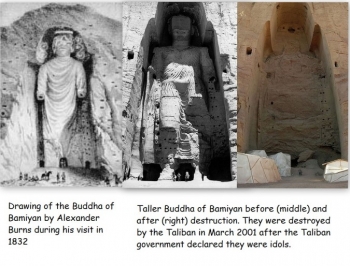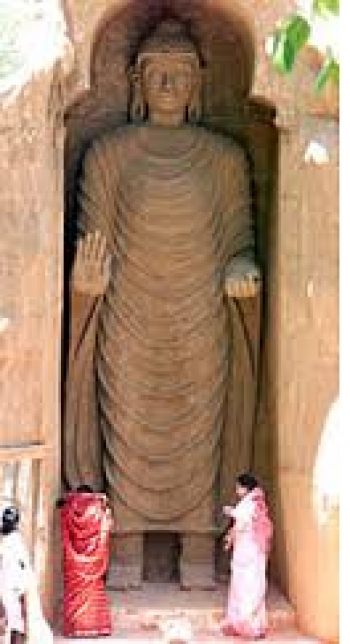Thirteen years after the destruction of theBamiyan Buddhas became a symbol of the Taliban’s fanatical intolerance, international opinion remains split over whether or not to build copies to replace the originals. The Afghan government wants at least one of the statues rebuilt, reported The New York Times, in order to score what it sees as a powerful symbolic victory against the Taliban. But influential backers warn that it could be a futile exercise in replication rather than a true testimony to history.
Abdul Ahad Abassi, head of monuments for the Afghan culture ministry, said the government had formally made a request to UNESCO’s World Heritage Committee that the smaller Buddha be rebuilt. But Muhammad Asir Mubaligh, the Bamiyan deputy governor, said: “In 10 years, the Expert Working Group has come to no final decision. I know they have achieved some small things, but 10 years? The main problem is there hasn’t been a donor country to say, ‘We will pay for it.’ ”
Several countries continue to allocate funds for developing Bamiyan, but none yet for rebuilding the Buddhas. South Korea recently announced a US$5.4 million grant to build a museum about the area’s heritage and history and to teach local Afghan workers conservation techniques. Rival Japanese and Italian proposals suggest other museum and conservation projects.
“I say rebuild one of them to attract tourists, and one should remain like that to remind people what the Taliban did,” said the Bamiyan Tourism Association’s Abdullah Mahmoodi. “The best way to protect our monuments is to make them valuable again.”
Arguments about preservation are usually limited to small circles of archaeologists. But the scope of the debate has expanded rapidly since February, after German conservators surreptitiously began building supporting pillars that looked like feet in the eastern niche (there are two niches, east and west). So far, the consensus of the decade-old Expert Working Group has been simply to preserve and protect the niches.
Archaeologist Professor Michael Petzet had clear motives for the pillar-feet: “These feet, it was only the idea for the safety of the whole structure,” he says, “and maybe in the future if the Afghan government wants to make a little bit more, they can build upon this.” Petzet is the president of the German branch of the International Council on Monuments and Sites, which has gained considerable influence during its contract work for UNESCO. When UNESCO discovered the stone feet, it immediately petitioned the Afghan government to halt the construction.
“Our priority has been to stabilize iconic elements of the World Heritage site that are unstable,” said UNESCO’s Brendan Cassar. “To make a good restoration when you haven’t addressed steps 1 to 9 is misplaced.” He also warned that the western niche remains in danger of collapse with rocks and stones falling regularly, partly a legacy of the high explosives the Taliban set to destroy the monuments. Pledges from donors to fund even that basic work have fallen short by at least US$700,000, Mr. Cassar said. “Unesco’s position is that restoration is a case of putting the cart before the horse,” he said. “We need to save all options for future generations.”
Petzet disagrees and suggests rebuilding the Buddhas would be no different from past efforts to reassemble parts of the Roman Forum or repair damaged post-earthquake mosaics in Assisi, Italy. “In France, whole cathedrals were reconstructed in Gothic style after they were blown up by Protestants in the 1600s.” He told The NY Times, “I’ve talked with many Afghans, and they do not want that their children and grandchildren are forced by the Taliban to see only ruins.”
The World Heritage Site would have been truly awe-inspiring in its heyday. The Buddhas, at 174 feet and 115 feet respectively, would have overlooked a flourishing Buddhist culture in the valley among a network of grottoes, tunnels, passageways, and staircases that led to monasteries and ceremonial chambers. Xuanzang wrote that their wooden faces had jewelled eyes with huge lanterns lighting them up at dusk. Judging by the protracted debate, it will be a long time indeed before those eyes are ever reconstructed, let alone illuminated.
















